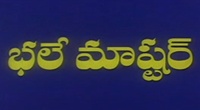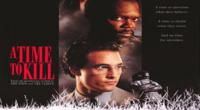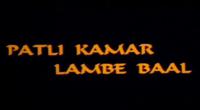Who Killed the Electric Car? is a 2006 documentary film that explores the creation, limited commercialization, and subsequent destruction of the battery electric vehicle in the United States, specifically the General Motors EV1 of the mid-1990s. The film explores the roles of automobile manufacturers, the oil industry, the federal government of the United States, the California government, batteries, hydrogen vehicles, and consumers in limiting the development and adoption of this technology.
| Who Killed the Electric Car? | |
|---|---|
DVD cover | |
| Directed by | Chris Paine |
| Produced by | Jessie Deeter |
| Written by | Chris Paine |
| Starring | Tom Hanks (from a recording) Mel Gibson Chelsea Sexton Ralph Nader Joseph J. Romm Phyllis Diller |
| Narrated by | Martin Sheen |
| Music by | Michael Brook |
| Cinematography | Thaddeus Wadleigh |
| Edited by | Michael Kovalenko Chris A. Peterson |
Production company | Electric Entertainment |
| Distributed by | Sony Pictures Classics |
Release date | Sundance Film Festival January 23, 2006 United States June 28, 2006 United Kingdom August 4, 2006 Australia November 2, 2006 |
Running time | 92 minutes |
| Country | United States |
| Language | English |
| Box office | $1,764,304 (worldwide) |
After a premiere at the Sundance Film Festival, it was released theatrically by Sony Pictures Classics in June, 2006 and then on DVD by Sony Pictures Home Entertainment on November 14, 2006.
During an interview with CBS News, director Chris Paine announced that he had started a new documentary about electric cars with a working title of Who Saved the Electric Car?, later renamed Revenge of the Electric Car, which had its world premiere at the 2011 Tribeca Film Festival on Earth Day, April 22, 2011.
Screenplay
The film deals with the history of the electric car, its modern development, and commercialization. The film focuses primarily on the General Motors EV1, which was made available for lease mainly in Southern California, after the California Air Resources Board (CARB) passed the zero-emissions vehicle (ZEV) mandate in 1990 which required the seven major automobile suppliers in the United States to offer electric vehicles in order to continue sales of their gasoline powered vehicles in California. Nearly 5000 electric cars were designed and manufactured by Chrysler, the Ford Motor Company, General Motors (GM), Honda, Nissan, and Toyota; and then later destroyed or donated to museums and educational institutions. Also discussed are the implications of the events depicted for air pollution, oil dependency, Middle East politics, and global warming.
The film details the California Air Resources Board's reversal of the mandate after relentless pressure and suits from automobile manufacturers, continual pressure from the oil industry, orchestrated hype over a future hydrogen car, and finally the George W. Bush administration.
A portion of the film details GM's efforts to demonstrate to California that there was no consumer demand for their product, and then to take back every EV1 and destroy them. A few were disabled and given to museums and universities, but almost all were found to have been crushed. GM never responded to the EV drivers' offer to pay the residual lease value; $1.9 million was offered for the remaining 78 cars in Burbank, California before they were crushed. Several activists, including actresses Alexandra Paul and Colette Divine, were arrested in the protest that attempted to block the GM car carriers taking the remaining EV1s off to be crushed.
The film explores some of the motives that may have pushed the auto and oil industries to kill off the electric car. Wally Rippel offers, for example, that the oil companies were afraid of losing their monopoly on transportation fuel over the coming decades; while the auto companies feared short-term costs for EV development and long-term revenue loss because EVs require little maintenance and no tuneups. Others explained the killing differently. GM spokesman Dave Barthmuss argued it was lack of consumer interest due to the maximum range of 80–100 miles per charge, and the relatively high price.
The film also showed the failed attempts by electric car enthusiasts trying to combat auto industry moves, and save the surviving vehicles. Towards the end of the film, a deactivated EV1 car #99 is found in the garage of Petersen Automotive Museum, with former EV sales representative, Chelsea Sexton, invited for a visit.
The film also explores the future of automobile technologies including a deeply critical look at hydrogen vehicles, an upbeat discussion of plug-in hybrids, and examples of other developing EV technologies such as the Tesla Roadster (2008), released on the market two years after the film.
The film features interviews with celebrities who drove the electric car, such as Ed Begley Jr., Mel Gibson, Tom Hanks, Peter Horton, and Alexandra Paul. It also features interviews with a selection of prominent American political figures including Jim Boyd, S. David Freeman, Frank Gaffney, Alan C. Lloyd (Chairman of the California Air Resources Board), Alan Lowenthal, and Ralph Nader. Included are interviews with Edward H. Murphy (representative of the American Petroleum Institute), and James Woolsey (former Director of Central Intelligence), as well as news footage from the development, launch and marketing of EVs.
The film also features interviews with some of the engineers and technicians who led the development of modern electric vehicles and related technologies, such as Wally Rippel, Chelsea Sexton, Alec Brooks, Alan Cocconi, Paul MacCready, Stan and Iris M. Ovshinsky, and other experts such as Joseph J. Romm (author of Hell and High Water and The Hype about Hydrogen). Romm gives a presentation intended to show that the government's "hydrogen car initiative" is a bad policy choice and a distraction that is delaying the exploitation of more promising technologies, such as electric and hybrid cars which could reduce greenhouse gas emissions and increase America's energy security. Also featured in the film are spokespersons for the automakers, such as GM's Dave Barthmuss, a vocal opponent of the film and the EV1, and Bill Reinert from Toyota.
The film was written and directed by Chris Paine, and produced by Jessie Deeter, and executive produced by Tavin Marin Titus, Richard D. Titus of Plinyminor and Dean Devlin, Kearie Peak, Mark Roskin, and Rachel Olshan of Electric Entertainment.
The film features a film score composed by Michael Brook. It also features music by Joe Walsh, DJ Harry and Meeky Rosie. Jeff Steele, Kathy Weiss, Natalie Artin and Alex Gibney were also part of the producing team.
The documentary was featured at the Sundance, San Francisco, Tribeca, Los Angeles, Berlin, Deauville, and Wild and Scenic Environmental film festivals and was released in theaters worldwide in June 2006.
The later portion of the film is organized around the following hypothesized culprits in the downfall of the electric car:
American consumers
While few American consumers ever heard of the electric cars in California, those who did were not necessarily critical mass for this new technology. Thanks to lower gas prices and infatuation with sport utility vehicles (SUVs), few people sought out this new technology. While some were fans (as chronicled in the film), many more needed time to consider the advantages and disadvantages of these new cars; whether freedom from oil or with the perceived limitations of a city car with a 100-mile range. Although allegations are made about consumers by industry representatives in the film, perhaps explaining the film's "guilty" verdict, the actual consumers interviewed in the film were either unaware that an electric car was ever available to try, or dismayed that they could no longer obtain one.
Batteries
In a bit of an unexpected turn, the film's sole "not-guilty" suspect is batteries, one of the chief culprits if one were to ask the oil or auto industries. At the time GM's EV1 came to market, it came with a lead acid battery with a range of 60 miles. The film suggests that since the average driving distance of Americans in a day is 30 miles or less, for 90% of Americans, electric cars would work as a daily commute car or second car.
The second generation EV1 (and those released by Honda, Toyota, and others) from 1998 to the end of the program, featured nickel-metal-hydride or even lithium-ion (Nissan) batteries with a range of 100 or more miles. The film documents that the company which had supplied batteries for EV1, Ovonics, had been suppressed from announcing improved batteries, with double the range, lest CARB be convinced that batteries were improving. Later, General Motors sold the supplier's majority control share to the Chevron Corporation and Cobasys.
As part of the not-guilty verdict, the famed engineer Alan Cocconi explains that with laptop computer lithium ion batteries, the EV1 could have been upgraded to a range of 300 miles per charge. He makes this point in front of his T-Zero prototype, the car that inspired the Tesla Roadster (2008).
Oil companies
The oil industry, through its major lobby group the Western States Petroleum Association, is brought to task for financing campaigns to kill utility efforts to build public car charging stations. Through astroturfing groups like "Californians Against Utility Abuse" they posed as consumers instead of the industry interests they actually represented.
Mobil and other oil companies are also shown to be advertising directly against electric cars in national publications, even when electric cars seem to have little to do with their core business. At the end of the film, Chevron bought patents and controlling interest in Ovonics, the advanced battery company featured in the film. Ostensibly to prevent modern NiMH batteries from being used in non-hybrid electric cars.
The documentary also refers to manipulation of oil prices by overseas suppliers in the 1980s as an example of the industry working to kill competition and keep customers from moving toward alternatives to oil.
Car companies
With GM as its primary example, the film documents that car makers engaged in both positive and negative marketing of the electric car as its intentions toward the car and California legislation changed. In earlier days, GM ran Super Bowl commercials produced by Industrial Light & Magic (ILM) for the EV1. In later days it ran "award winning" doomsday-style advertising featuring the EV1 and ran customer surveys which emphasized drawbacks to electronic vehicle technology which were not actually present in the EV1. (As a side note, CARB officials were quoted claiming that they removed their zero emission vehicle quotas in part because they gave weight to such surveys purportedly showing no demand existing for the EV1s.) Other charges raised on GM included sabotaging their own product program, failing to produce cars to meet existing demand, and refusing to sell cars directly (it only leased them).
The film also describes the history of automaker efforts to destroy competing technologies, such as their destruction through front companies of public transit systems in the United States in the early 20th century. In addition to EV1, the film also depicted how Toyota RAV4 EV, and Honda EV Plus were being cancelled by their respective car companies. The crushing of Honda EV Plus only gained attention after appearing quite by accident on an episode of PBS's California's Gold with Huell Howser.
In an interview with retired GM board member Tom Everhart, the film points out that GM killed the EV1 to focus on more immediately profitable enterprises such as its Hummer and truck brands, instead of preparing for future challenges. Ralph Nader, in a brief appearance, points out that auto makers usually only respond to government regulation when it comes to important advances whether seat belts, airbags, catalytic converters, mileage requirements or, by implication, hybrid/electric cars. The film suggests Toyota supported the production of Toyota Prius hybrid in part as a response to Bill Clinton's Partnership for a New Generation of Vehicles and other U.S. Government pressure that was later dropped.
Though GM cited cost as a deterrent to continuing with the EV1, the film interviewed critics contending that the cost of batteries and electric vehicles would have been reduced significantly if mass produc
Watch movie Who Killed The Electric Car%3f online on Amazon
Watch movie Who Killed The Electric Car%3f online
Watch The Movie On PrimeDil Hi To Hai Full HD Movie Download

Professor Full HD Movie Download

Laat Saab Full HD Movie Download

Sindoor (1987) Full HD Movie Download
.jpg)
Gunahon Ka Faisla Full HD Movie Download

Sindhu Bhairavi Full HD Movie Download

Kali Dada Full HD Movie Download

Anna Full HD Movie Download

Sakkanodu Full HD Movie Download

Bhale Master Full HD Movie Download

Lonavla Bypass Full HD Movie Download

Kattumarakkaran Full HD Movie Download

A Time to Kill Full HD Movie Download

Patli Kamar Lambe Bal Full HD Movie Download

Adhurs Full HD Movie Download

Jagame Maya Full HD Movie Download

Kanulu Musina Nuvve Full HD Movie Download

Prema Kavyam Full HD Movie Download

Pranam Full HD Movie Download

Jai Santoshi Mata Full HD Movie Download

Ayyappa Swamy Mahathyam Full HD Movie Download

Download latest Movie from bollywood
- 1> baaghi 3
- 2> THE SKY IS PINK MOVIE FULL STORY AND REVIEW
- 3> Luka Chuppi
- 4> TO ALL THE BOYS I’VE LOVED BEFORE
- 5> Kabir Singh
- 6> Street Dancer 3D
- 7> Simmba
- 8> Gone Girl
- 9> The Girl Who Lived
- 10> Ludo
- 11> DILWALE DULHANIA LE JAYENGE
- 12> GUILTY
- 13> The Godfather
- 14> Adventures of Rusty
- 15> Sooryavanshi
- 16> Satyameva Jayate 2
- 17> Thappad
- 18> Bhool Bhulaiyaa 2
- 19> KGFChapter 2
- 20> Mardaani 2
- 21> Pinjar
- 22> Shivaji maharaj
- 23> Ek Villian 2
- 24> Hungama 2
- 25> Divergent
- 26> Mumbai Saga
- 27> The Internship
- 28> HIT (telugu)
- 29> Panga
- 30> The perfect date
- 31> 16 December
- 32> Gopala Gopala (Telugu)
- 33> Brahmastra
- 34> Gangubai Kathiawadi
- 35> Manmadhudu
- 36> Nenu local
- 37> Mahanati
- 38> Shatamanam bavathi
- 39> Lagaan
- 40> After
- 41> MOM
- 42> Shamshera
- 43> Raguvaran BTech
- 44> Khakee
- 45> The villain
- 46> OM
- 47> Mr. perfect
- 48> Bueatifull mind
- 49> Hichki
- 50> Gabbar Singh
- 51> Jogi
- 52> Before Sunrise
- 53> Before Sunset
- 54> Before Midnight
- 55> The Big Bull
- 56> Top Gun: Maverick
- 57> The Purge
- 58> The Sky is Pink
- 59> Laxmmi Bomb
- 60> Sadak 2
- 61> Sufna
- 62> Prithviraj
- 63> PK
- 64> Coolie No 1(2020)
- 65> Black Widow
- 66> Dear Zindagi
- 67> Dil Bechara
- 68> PHIR HERA PHERI
- 69> WAR
- 70> Dostana
- 71> RRR: Roudram Ranam Rudhiram
- 72> Maidan
- 73> Dabbang 3
- 74> Chhalaang
- 75> life as we know it
- 76> SherShaah
- 77> Sandeep Aur Pinky Faraar
- 78> Event Horizon
- 79> 83
- 80> Radhe: Your Most Wanted Bhai
- 81> Gunjan Saxena: The Kargil Girl
- 82> Mr India
- 83> Vivah
- 84> Anokha Bandhan
- 85> Ghost
- 86> Bhoot: Part One - The Haunted Ship
- 87> Haseen Dilruba
- 88> Laal Singh Chaddha
- 89> Qismat
- 90> Rajput
- 91> Drive
- 92> Dil Chahta Hai
- 93> Dil Ki Baazi
- 94> Dil Ka Rishta
- 95> Teesri Manzil
- 96> Dil
- 97> Love Aaj Kal
- 98> Khaali Peeli
- 99> Bunty Aur Babli 2
- 100> Atrangi Re
- 101> Gulabo Sitabo
- 102> Jodi
- 103> Suraj Pe Mangal Bhari
- 104> Deewana
- 105> Attack
- 106> Sardar Udham Singh
- 107> Toofan
- 108> THE LOVEBIRDS
- 109> Jersey
- 110> Ginny Weds Sunny
- 111> Thalaivi
- 112> Shiddat
- 113> Angels vs Zombies
- 114> Koi Mil Gya
- 115> Thank God
- 116> Bhuj: The Pride of India
- 117> Hum Aapke Hain Kaun
- 118> The Platform
- 119> Bird Box
- 120> Roohi Afzana
- 121> Torbaaz
- 122> Nikamma
- 123> World War Z
- 124> Extraction
- 125> Train to Busan
- 126> Life of Pi
- 127> SHAADI MEIN JROOR AANA
- 128> Himmat Aur Mehnat
- 129> To All The Boys: P.S. I Still Love You
- 130> Mimi
- 131> Good Newwz
- 132> Shubh Mangal Zyada Saavdhan
- 133> Raabta
- 134> Harry Potter and the Philosopher's Stone
- 135> Harry Potter and the Chamber of Secrets
- 136> Chhapaak
- 137> War of the Worlds
- 138> Harry Potter and the Prisoner of Azkaban
- 139> Harry Potter and the Goblet of Fire
- 140> MURDER MYSTERY
- 141> Shakuntala Devi
- 142> Bachchan Pandey
- 143> Jayeshbhai Jordar
- 144> Sheer Qorma
- 145> Saina
- 146> 'O' Pushpa I hate tears
- 147> Kedarnath
- 148> MS Dhoni The Untold Story
- 149> Chhichhore
- 150> Badhaai Ho
- 151> Unstoppable
- 152> Oz the Great And Powerful
- 153> The Girl on the Train
- 154> Haathi Mere Saathi 2020
- 155> The Conjuring: The Devil Made Me Do It
- 156> Gandhi Se Pehle Gandhi
- 157> The Song of Scorpions
- 158> Srimanthudu
- 159> Hello Guru Prema Kosame
- 160> Beauty and The Beast
- 161> Black Panther
- 162> Charlie and the Chocolate Factory
- 163> Bole Chudiyan
- 164> Fidaa
- 165> Duvvada Jagannadham
- 166> Bruce Lee: The Fighter
- 167> Hyper
- 168> Yaara
- 169> Red (2020)
- 170> Shivam
- 171> That Is Mahalakshmi
- 172> Nishabdham
- 173> Aashram 2020 web series
- 174> Laxmii
- 175> Mismatched
- 176> STUDENT OF THE YEAR 2
- 177> NAIL POLISH
- 178> Ramprasad Ki Tehrvi
- 179> KAAGAZ
- 180> 12 o Clock
- 181> The Power
- 182> bolo hau
- 183> Tribhanga
- 184> JAMUN
- 185> Madam Chief Minister
- 186> Maasaab
- 187> Aadhaar
- 188> Tanhaji
- 189> Bhaagi 3
- 190> Bhootnath
- 191> MALANG
- 192> Jai Mummy Di
- 193> Haathi Mere Saathi 2021
- 194> Shakeela
- 195> Unpaused
- 196> Annayya
- 197> Vamsoddharakudu
- 198> Mrugaraju
- 199> Narasimha Naidu
- 200> Sankranti
- 201> Manasu Maata Vinadhu
- 202> Anjaane
- 203> Apaharan
- 204> Bachke Rehna Re Baba
- 205> Bewafaa
- 206> Roohi
- 207> Radhe
- 208> Zindagi Khoobsoorat Hai
- 209> Yeh Mohabbat Hai
- 210> Yeh Kya Ho Raha Hai?
- 211> The Tomorrow War
- 212> DehradunDiary
- 213> Meri Shaadi Karaoo
- 214> Matruu Ki Bijlee Ka Mandola
- 215> No One Killed Jesica
- 216> Aag Ka Goola
- 217> Eight Million Dollars
- 218> Three Hundred
- 219> Cats and Dog
- 220> Decoy
- 221> Gold Rush
- 222> You Have Got Mail
- 223> Final Destination three
- 224> Tofan
- 225> Jungle
 Story of movie Who Killed The Electric Car%3f :
Story of movie Who Killed The Electric Car%3f : 